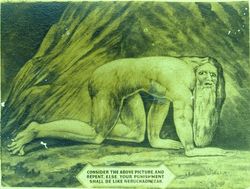History of Plateau State.
History of Plateau State.
History
The Birth of Plateau State
Plateau State, which derives its name from the Jos Plateau, is located more or less at the centre of the country (Nigeria). The State has an area of about 26,899 sq. km and shares common boundaries with Benue, Nassarawa, Kaduna, Taraba, Bauchi, and Gombe States.
Plateau State is a product of half a century of boundary adjustments arising on the one hand, from the ambition of the colonial masters to create a province which consisted largely of non-Muslims under one Resident, in order to protect the railway line being constructed at that time and guarantee the sustenance of tin mining activities which began in 1902, and the strong desire of the peoples in this area of political self-determination, on the other hand. In the formative years of British colonialism in Nigeria, much of Plateau State was part of Bauchi Province.
In 1926, Plateau Province, comprising Jos and Pankshin Divisions, was carved out of Bauchi Province. At various times between 1926 and 1976, the boundary of Plateau Province oscillated, paralleling the general trend of political development in the country, as the government of the day acquiesced to the agitation of different ethnic groups to be merged with their kith and kin that are of larger concentrations in other provinces. During this period, therefore, some administrative units or divisions as they were then called, from neighbouring provinces were added to or subtracted from Plateau Province.
In May 1967, Benue and Plateau Provinces were merged to form Benue-Plateau State, one of the twelve states into which the military administration of General Yakubu Gowon divided Nigeria in place of the four then existing regions. The division of the country into smaller semi-autonomous states was an attempt to introduce a sense of balance between the north and the south, and to save the Federation from total disintegration which was imminent from the polarization of the country along ethnic lines after the bloody military take-over of 1966 and the subsequent crisis which led to an attempted secession by the Eastern Region.
Benue-Plateau State emerged as one of those large states of the Federation where pressure was mounted on the Federal Government immediately after the civil war for the creation of more states.
When the country was however further divided into nineteen states in 1976, Plateau Province was severed from Benue-Plateau State to become Plateau State. In 1996, the present Nassarawa State was carved out of the western half of Plateau State by the Abacha military regime. At the time of writing this brief history of the state, plateau has only seventeen Local Government Areas, namely; Langtang North, Langtang South, Jos North, Jos East, Jos South, Pankshin, Kanke, Mikang, Shendam, Qua’anpan, Riyom, Bassa, Wase, Dengi, Bokkos and Birkib Ladi.
HISTORY OF LANGTANG NORTH.
Welcome To Home Of Peace And Tourism.
POPULATION EDUCATION
ISHAYA N. ZHAKOM+2348038573951
Hello reader, I guessed you might have heard about “Nigeria the giant of Africa” but have you ever paused to ask yourself or someone else as to why the nick name? The reasons are many, but one of such reasons is her high population. In this context, the giant of Africa as refer to Nigeria is a misnomer. The rate at which people give birth in Nigeria is alarming and pathetic according to UNESCO report on world population. People have been nurtured with the wrong notion that what they shall be remembered for, when they died are children, and so, people give birth to many children without thinking of the after effect. What could be responsible for this myopic reasoning?
